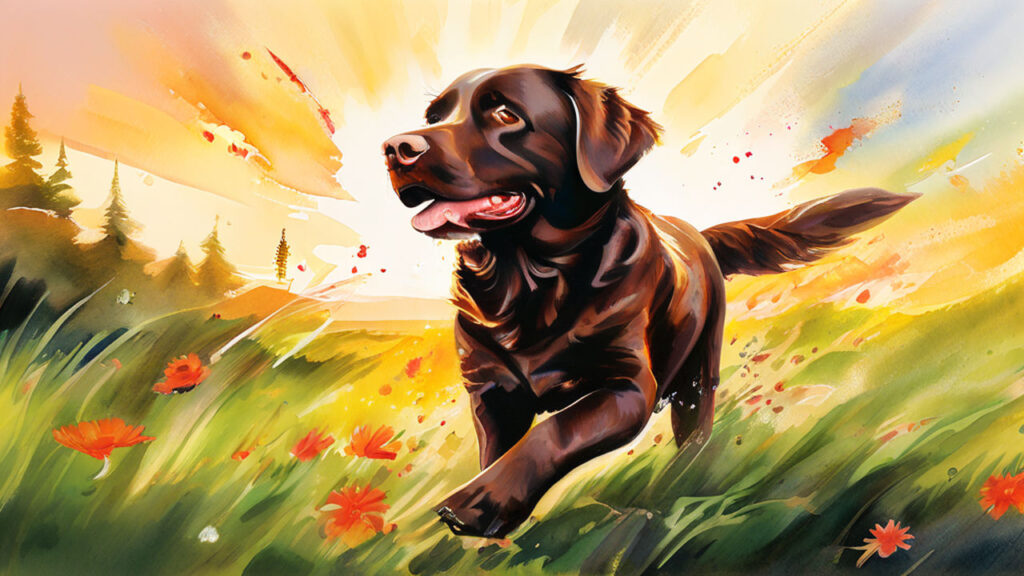Why Does My Dog Chase His Tail? Understanding This Playful Behavior
Have you ever watched your dog spin in circles, frantically trying to catch its own tail? It’s a common sight that can be both amusing and concerning. But what’s the reason behind this tail-chasing obsession?
This blog post will delve into the fascinating world of canine tail chasing, exploring the various reasons why dogs engage in this behavior. We’ll also discuss how to differentiate between playful spinning and signs that might warrant a visit to the vet.
Reasons Why Dog Chasing His Tail
Doggy tail chasing can stem from a multitude of causes. Here’s a breakdown of the most common ones:
Dog Chasing His Tail: Puppy Play and Exploration
For curious puppies, their tail is a brand new appendage just begging to be investigated! They might bat at it, sniff it, and yes, chase it around in circles. This playful exploration is a normal part of puppy development as they learn about their bodies and the world around them. In most cases, this tail-chasing phase is short-lived and doesn’t require intervention.
Dog Chase Its Tail: Excess Energy and Boredom

If your dog isn’t getting enough physical and mental stimulation, tail chasing might become a way to burn off some steam and entertain themselves. This is especially true for younger dogs with boundless energy.
Here are some signs that boredom might be the culprit:
- The tail chasing becomes frequent and prolonged.
- It’s accompanied by other signs of boredom, such as destructive chewing or excessive barking.
- Your dog seems restless and easily excitable.
Dog Chasing His Tail: Seeking Attention
Some dogs learn that tail chasing gets them a reaction from their owners. Even if it’s a scolding, the attention itself might be rewarding for them. If you find your dog chasing its tail and you react with a lot of fuss, you might inadvertently be encouraging the behavior.
Underlying Medical Conditions
In rare cases, tail chasing can be a sign of an underlying medical condition. This is more likely if the behavior is sudden, obsessive, and accompanied by other symptoms like:
- Skin irritation or pain around the tail
- Anal gland problems
- Ear infections
- Obsessive licking or chewing
When to Worry About Tail Chasing

While tail chasing is often a harmless behavior, there are situations where it might be a cause for concern. Here are some red flags to watch out for:
- Intensity and duration: If your dog chases its tail for extended periods, seems distressed or unable to stop, it could be a sign of compulsion.
- Self-injury: In severe cases, obsessive tail chasing can lead to injuries on the tail or hindquarters.
- Sudden onset: If your dog has never chased its tail before and suddenly starts doing it excessively, it could indicate an underlying medical issue.
If you notice any of these signs, it’s best to schedule a consultation with your veterinarian to rule out any medical problems.
How to Stop Your Dog From Chasing Its Tail (The Right Way)
The approach to stopping tail chasing depends on the underlying cause. Here are some tips:
- Address boredom: Provide your dog with plenty of exercise and mental stimulation through daily walks, playtime, and interactive toys.
- Ignore attention-seeking behavior: If your dog seems to be chasing its tail for attention, resist the urge to react. Redirect their focus with a toy or a command instead.
- Consider training: Teach your dog basic commands like “leave it” or “come” to distract them from tail chasing and redirect their attention.
- Seek professional help: If the tail chasing is severe or seems to be linked to an underlying issue, consult with a certified animal behaviorist for personalized guidance.
Conclusion
Tail chasing is a common canine behavior that can have various explanations. By understanding the potential causes and observing your dog’s behavior, you can determine if it’s playful exploration or something more concerning. Remember, a healthy dose of exercise, mental stimulation, and proper attention can go a long way in keeping your furry friend happy and tail-chase-free!
See more beautiful images of pets at AI Pawsome Art. All images in this post were created with AI at playground.com